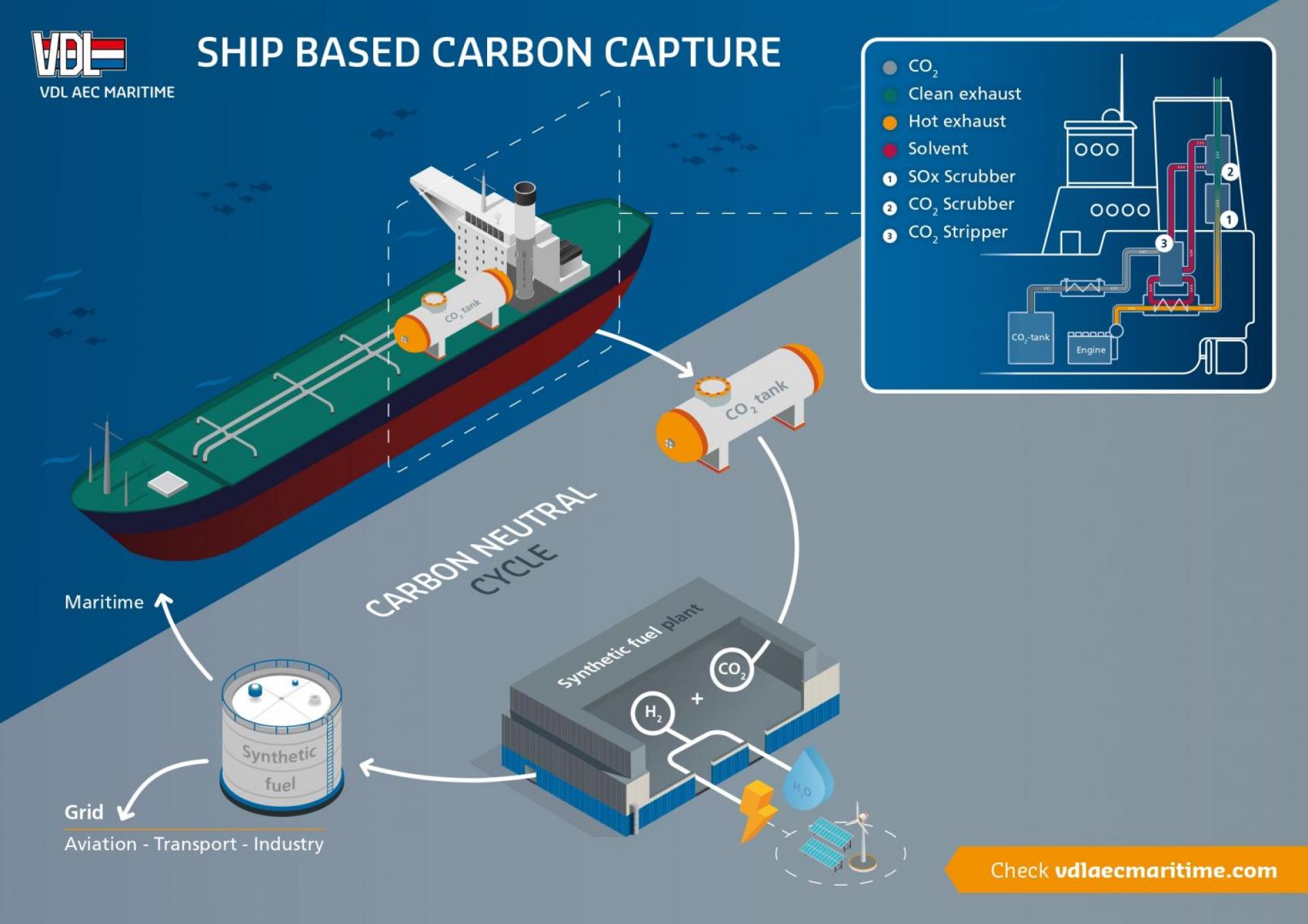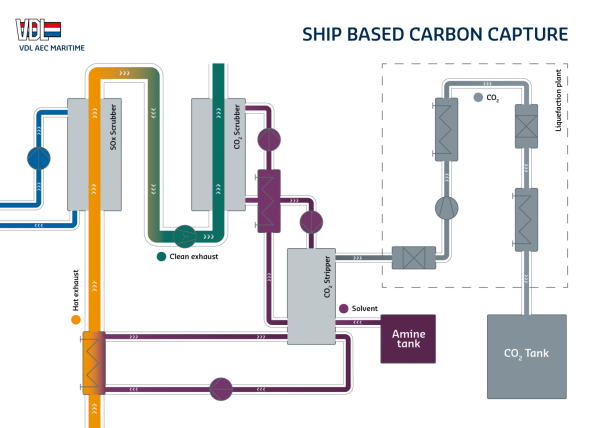Carbon neutral cycle ♻️
This picture shows how we envision carbon reduction for the shipping industry.
The captured CO2 is stored on the vessel in a tank. In port the CO2 is transfered from the vessel to an onshore storage facility. From here the CO2 is transferred to a plant where synthetic fuel is produced.
Hydrogen from green energy (sun or wind) is combined with the captured CO2 into a new synthetic fuel. The synthetic fuel can be used in any application, for example the maritime, aviation or transport industry.
In this way, carbon emitted by the vessel is completely re-used and therefore the vessel can be labeled as carbon neutral.


